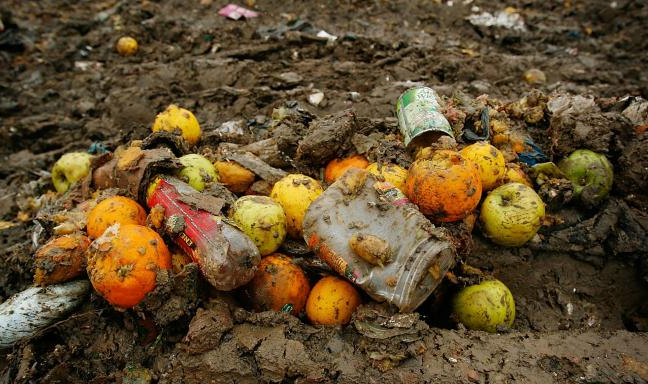The Fix For Tons Of Wasted Food: Buy Less And Shop Smarter

(Reuters Health) - Americans throw out more than one third of the food produced in the U.S. each year - enough to fill 320,000 jumbo jets – with most of it going straight into landfills.
But a lot of this waste could be eliminated with smarter shopping habits and better meal planning, some nutrition researchers argue.
"The average American family throws away 23 pounds of food each month, averaging around $190 thrown into the garbage," said study co-author Katie Brown, chief global nutrition strategy officer at the Academy of Nutrition and Dietetics Foundation in Chicago.
"Becoming more observant of food that finds itself in the landfill rather than in a stomach can help shift our buying habits," Brown added by email. "This can come in the form of ordering less food when dining out, freezing bananas before they over ripen, or even making a meal plan for the week to help cut costs and waste."
Waste can occur anywhere in the U.S. food chain, from farms, processors, distributors, wholesalers, retailers, restaurants and home kitchens, Brown and co-author Chris Vogliano note in the Journal of the Academy of Nutrition and Dietetics.
But most of the waste happens after food reaches the market, either because retailers or consumers throw it out, they explain.
Dairy products and vegetables are discarded most often, each accounting for about 19 percent of food waste. Fruit and grains come next, both contributing about 14 percent of waste, followed by sugars and sweeteners at 13 percent and meat, poultry and fish at 12 percent.
Before food ever leaves the farm, growers can help reduce waste by feeding livestock any produce that isn't fit for human consumption, the authors say. Composting on the farm can also help avoid waste in the landfill.
As food makes its way from farms to processors and retailers, proper storage and efficient transportation can also help prevent spoilage, minimizing waste.
When food is processed, unused scraps such as broccoli stalks, lemon peels and animal fat can all be repurposed as ingredients in other foods for humans and animals. Trimmings that can have a second life as ingredients in other processed foods include pineapple juice waste, corncobs, orange peels, cabbage leaves and carrot tops.
Stores can help solve the problem by purchasing less, donating extra food and composting, the authors point out. Retailers can also work with farmers to sell imperfect or ugly-looking produce at a discount, so it gets consumed instead of thrown out.
Supermarkets can also work with area restaurants and chefs to find creative ways to incorporate surplus food into menus. Even produce that looks bad on the shelf can taste great in a soup, smoothie or baked item, for example.
Consumers need to understand product labeling so they don't toss food they could actually still use, the authors explain.
When packages have a "use by" or "best by" date, this indicates how long the unopened product will be at its best quality, but it can still be consumed for quite some time after this as long as it is properly stored.
The "sell by" date, usually on perishable items like meat and milk, indicates how long retailers can keep items on the shelf, but they are usually safe to consume for a few days beyond this date as long as they are stored well.
Given the vast amount of food wasted in the U.S. each year, focusing on any one of these approaches can make a difference, Brown noted.
"Food is being treated as a disposable good, and we must begin to make the connection between the wellbeing of people, the planet and our pocketbooks," Brown said.
SOURCE: http://bit.ly/1SVrhOQ Journal of the Academy of Nutrition and Dietetics, online March 21, 2016.
Published by Medicaldaily.com



























